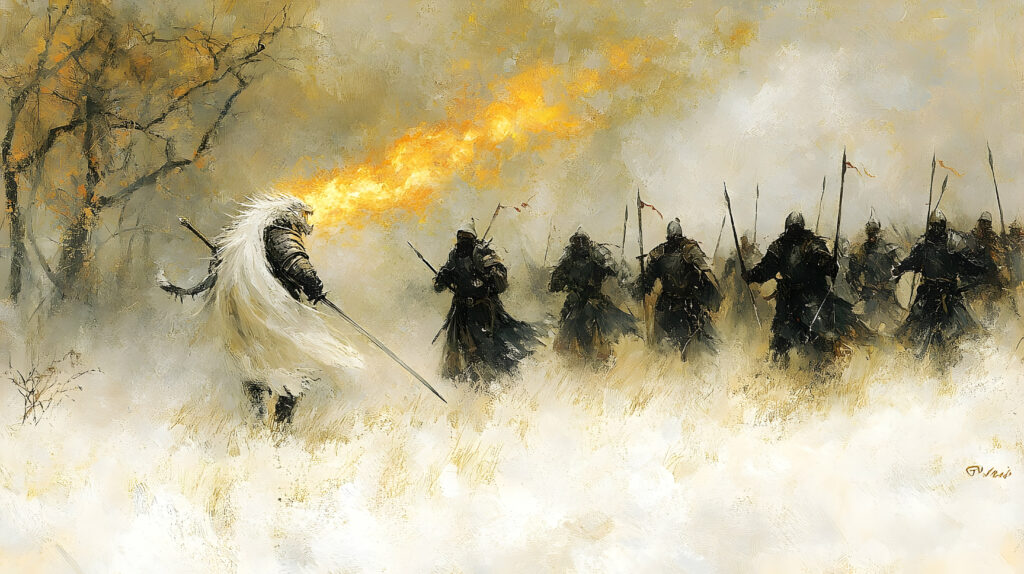Are your leadership skills falling flat despite your best strategies? What if your greatest leadership skills weren’t in your plans but in your stories? Could mastering storytelling be the secret to transforming your leadership skills from forgettable to legendary?
Let me be blunt: most leadership skills training skips the one thing that actually moves people—story. In this post, I dig into why storytelling isn’t just a soft skill; it’s a leadership superpower. I share how a well-crafted narrative can spark devotion, energize teams, and turn even a budget meeting into a shared quest. When people see themselves as part of a story, they don’t just show up—they engage with purpose. I’ve seen firsthand how wrapping goals in meaning transforms how people respond to challenges, decisions, and change.
I also talk about the unexpected power of vulnerability in strengthening leadership skills. Sharing my own setbacks and scars—through story—has built deeper trust and resilience across my teams. Storytelling turns cold communication into human connection, and that connection is what shapes team culture, reinforces values, and ultimately defines your legacy. These stories don’t just inspire in the moment—they echo long after the meeting ends. For me, leadership has become less about being in charge and more about crafting a mythos worth belonging to.
How Great Storytelling Can Improve Your Leadership Skills
Let’s begin with a truth—because I really like those, especially when they’re inconvenient: most leaders have charisma of a wet sock at a fireworks show. They talk of strategy, of goals, of synergy (what a dreadful word), and forget the one thing that actually moves people: story.
Yes, story. That ancient art of spinning words into wonder. Of turning mere mortals into believers, rebels, and dreamers. Kings knew it. Prophets weaponized it. And if you’ve ever cried during a Pixar film, then so do you. But here’s the devilish twist: great storytelling isn’t just for bedtime or Netflix. It’s the ultimate leadership superpower.
Let me show you how.
Table of Contents:
How Great Storytelling Can Improve Your Leadership Skills
- Storytelling Makes You Magnetic—And I Do Mean Irresistibly So
- Stories Create Clarity in Chaos
- Your Vulnerability Becomes a Virtue (Not a Liability)
- You Become the Culture Architect
- Your Legacy Becomes Legendary
1. Storytelling Makes You Magnetic—And I Do Mean Irresistibly So
Anyone can issue a command. Few can inspire obedience laced with devotion. The difference? A well-told tale.
Think of it. Would you rather follow someone barking orders from a PowerPoint or someone who paints you into a thrilling mission where you’re the sword-bearing hero destined to save the realm—or at least the quarterly report?
When you tell stories, you’re not just conveying data. You’re igniting imagination. You’re giving your team something to feel. People don’t rally behind bullet points—they rally behind belief. And stories, my friend, are belief in motion.
Tell your team why the mission matters. Who it helps. What dragon you’re slaying together. Make them feel like they’re part of something epic—not just clocking in.
Because when people feel like characters in a larger-than-life saga, they’ll fight harder, stay longer, and yes—maybe even follow you into Hell.
And if you’re feeling fancy, do this not just in your team meetings, but in how you write emails, onboard new hires, and give feedback. Wrap every bit of leadership communication in the velvet robe of narrative. Even a budget review can become a thrilling journey from scarcity to triumph.
Build rituals that reinforce your team’s shared story. Weekly wins become highlight reels. Annual reviews become character arcs. Use language that elevates the mundane into the mythical. Every meeting isn’t just a time to sync up—it’s a council of warriors strategizing for the next conquest.
And yes, when your team starts quoting your stories to new recruits, that’s when you know you’ve crossed into the realm of legend.
2. Stories Create Clarity in Chaos
Leadership often feels like juggling flaming swords while blindfolded—on a unicycle. There’s uncertainty. Noise. Confusion. In times like these, facts don’t comfort. Meaning does.
And that’s where story steps in, all suave and smooth like James Bond in a casino.
Great storytelling takes the tangled threads of reality and weaves them into something people can understand. It turns abstract goals into tangible journeys. Complex changes into digestible adventures. It replaces panic with purpose.
Say your company’s restructuring. Sure, you could send a stiff memo that sounds like it was generated by a robot in a tie. Or… you could tell a story: about transformation, about adapting to survive and thrive. About how this isn’t a death knell—it’s a rebirth. A phoenix moment.
Story gives context. Context gives courage.
In chaos, the leader with the clearest, most compelling story becomes the anchor.
When you’re navigating change, don’t just tell your team what is happening—tell them why, and tell them in the form of a journey. If it’s hard, make them the underdogs. If it’s risky, make them the adventurers. You don’t need to lie—just find the heartbeat in the truth.
Even resistance softens when you bring people into the narrative, when you help them feel like agents, not victims. And in doing so, you make them co-authors of what’s to come.
You can even use metaphor and symbolism here. A rocky quarter isn’t just a bad number—it’s a storm, and you’re the captain steering them through it. A pivot isn’t just a restructure—it’s the next act in an epic saga.
Remember, no one remembers the forecast. But they do remember the storm and the leader who got them through it.

3. Your Vulnerability Becomes a Virtue (Not a Liability)
Now, let’s talk about something terrifying to most leaders: showing weakness. Gasp! Horror! Hide the spreadsheets!
But here’s the trick: if you want people to trust you, they have to see you. The real you. And nothing reveals character like a personal story of failure.
Yes, I said failure. The kind that burned. That scarred. That nearly made you quit. That’s the story people remember.
When you tell your team about the time you messed up, doubted yourself, or fell flat—but got up anyway—you’re not diminishing your authority. You’re amplifying your humanity.
And humans follow humans—not flawless statues.
Great leaders bleed on the page so others know they’re not alone. They tell stories that say: “I’ve been there. I get it. And we’ll get through it together.”
It’s not weakness. It’s connection. And connection is power in its purest, most enduring form.
This is the magic of storytelling over confession. When you wrap your vulnerability in a well-told story, you’re not just dumping your trauma on your team. You’re inviting them into a shared space of resilience. You’re saying: “Here’s where I’ve fallen, and here’s how I rose. And you can rise, too.”
And when a leader does that? They don’t just earn respect. They earn loyalty—the kind that doesn’t quit when the next offer lands.
You can use these stories in onboarding talks, in one-on-ones, or even as part of your company blog. The goal isn’t to put yourself on a pedestal. It’s to show that the pedestal is shaky, and you climbed it anyway.
Vulnerability done right makes you not just admired, but beloved. And isn’t that so much better?
4. You Become the Culture Architect
Every team, every company, every kingdom runs on culture. But culture isn’t built on posters or mission statements. It’s built on stories.
Little stories, whispered between desks. Big stories, told at retreats. Stories that define who you are, what you believe, and how you behave.
Want to create a bold, risk-taking culture? Tell stories about bold risks that paid off—and the ones that didn’t, but were applauded anyway.
Want to foster kindness? Share stories where compassion won the day.
Every story you tell becomes a cultural blueprint. A spell, if you will, cast across the minds of your people. The more you repeat them, the stronger the magic.
So be intentional with your tales. Use them to reinforce values, honor heroes, and enshrine moments that matter.
Tell stories that celebrate the unsung. That mark the milestones. That whisper to your team, “This is who we are.”
And when those stories start spreading organically, when new hires hear the legends and want to live up to them—you’ll know you’ve done more than build a team.
You’ve created a mythos. One worth belonging to.
Better still? Invite others to co-create it. Ask for their stories. Share their wins in narrative form. Make storytelling a shared ritual, a way of life.
Before you know it, you won’t just have a workplace. You’ll have a world.
5. Your Legacy Becomes Legendary
We all want to be remembered. Even the immortals among us. But leadership isn’t measured in tasks completed—it’s measured in stories told about you when you’re not in the room.
Did you inspire greatness? Did you stand for something? Did you make people feel capable, valued, seen?
Your legacy won’t be the systems you implemented. It’ll be the moments when someone says, “She once told me something that changed how I saw myself.”
Tell stories that plant those seeds. Stories that outlive the room, the project, the era.
It’s not ego. It’s impact.
Great leaders aren’t just effective. They’re unforgettable.
Make no mistake, people may forget the spreadsheets. They may forget the quarterly goals. But they won’t forget how you made them feel. And stories? They’re the emotional time capsules of those moments.
So don’t just tell them how to work. Tell them how they matter.
Tell stories that whisper long after the lights go out.
Invite your people to carry the tale forward. Ask them what they want to remember you for—and live that every day. Turn your everyday choices into the stuff of future campfire fables.
Your legacy isn’t something you leave behind. It’s something you live into now.
Final Temptation
Leadership is not about control. It’s not about hierarchy. It’s not even about being the loudest in the room (though it doesn’t hurt if you look devilishly good doing it).
It’s about moving hearts. Shaping minds. Stirring souls.
And nothing does that like story.
So don’t just lead.
Narrate.
Enchant.
Seduce with significance.
Because in the end, the greatest leaders aren’t just followed—they’re remembered in tales passed down, voice to voice, firelight to firelight.
And if you do it right, they’ll be telling your story long after the last slide fades.
Until next time, storytellers… stay legendary.




